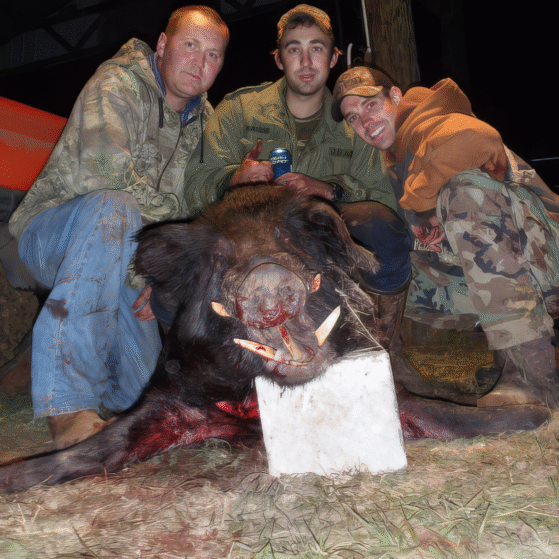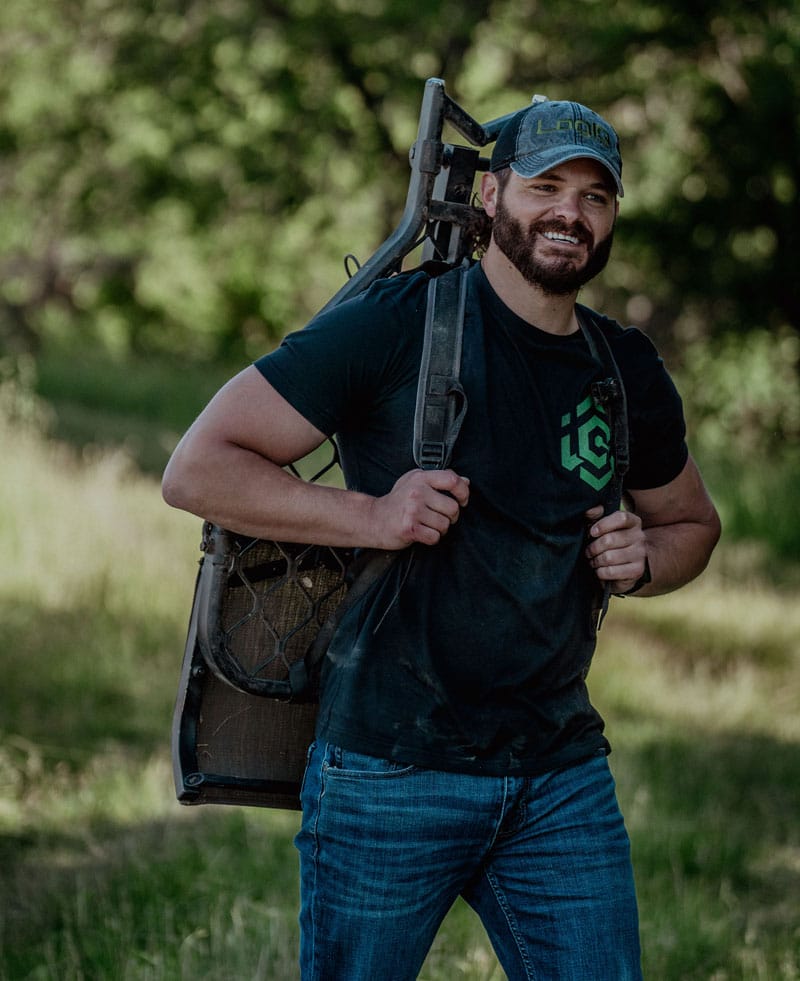The humid air hung thick over the hills of western Kentucky, where the wind curves between timber ridges and forgotten creek beds. Out here, where copperheads slither and cell signal fades, Nick Miller has carved out a life of steel, sweat, and solitude. A union ironworker turned safety man, Nick’s spent decades moving from job to job, state to state, chasing beams and bucks. But long before construction sites and compliance reports, his story started in the oak woods of southern Illinois—with a cheap seat, screw-in steps, and a bow in hand.
Southern Illinois Beginnings
Nick was just ten when he started gun hunting in 1990, under the watchful eye of his dad. “I didn’t kill a deer until ’94,” he admits, laughing. “Missed a bunch before that.” But when that first deer finally hit the ground—a 125-inch, 220-pound nine-pointer—it changed everything. By the following year, Nick had switched to a bow and never looked back. He remembers lugging a loggy bayou seat into the woods with a handful of screw-in steps and a release that fell apart on his first hunt. He improvised, went back to shooting with fingers, and still double-lunged a doe at 14 yards. From that moment on, he was hooked.
Ironworker to Safety Guy
For years, Nick worked under cranes, rigging steel and hanging iron. Now he follows crews as the safety guy—the one everyone loves to hate. “I’ve done everything they’re doing. I know the tricks, ’cause I did the tricks,” he jokes. His transition from hardhat to clipboard wasn’t easy, but it gives him time to hunt, even if the computer work drives him crazy. “The safety part’s not hard. The laptop’s what kicks my butt.”
Old School Bowhunting
Nick’s bowhunting roots run deep. Back in the day, he shot an XI Legend Magnum with aluminum arrows and fixed blades. “There wasn’t no mechanicals,” he says. “You had muzzies, Thunderheads, and a few cheap Walmart brands.” Over the years, he’s dabbled with expandables but always circles back to fixed broadheads for their reliability. “A two-inch mechanical might look cool, but I want that arrow punching through the offside shoulder. I want an exit hole.”
Generational Legacy
Now 45, Nick’s passing the torch. His 23-year-old son—who killed his first deer with a bow at just eight—is already an accomplished hunter and new father. Nick beams with pride: “He’s not better than me yet. But he will be.” They share a bond forged in frosty mornings and blood trails, and though they don’t hunt together as much anymore, the connection hasn’t faded. “When he kills one, I hope he still calls me,” Nick says quietly.
Public Land and the Price of Access
Nick’s hunted long enough to see the rise of leases and the fall of handshake permission. “I used to be able to hunt anywhere,” he says. “Now, it’s all locked up or leased out.” That shift pushed him south to the Shawnee National Forest—277,000 acres of public land. He welcomes others who ask nicely, even sharing pins. “It’s public land. Just let me know what you see. That’s all I ask.”
Changes in the Woods
Over time, Nick’s noticed fewer deer and more pressure. “Back in the day, check stations were full of handshakes—didn’t matter if you shot a spike or a giant.” Now, hunters guard their spots and hide their deer. He blames unlimited doe tags and EHD for decimating southern Illinois’ herd. “I could find 30 sheds ten years ago. Now I’m lucky to find one.”
Shot Stories and Hard Lessons
Like any lifelong hunter, Nick’s got a catalog of moments burned into memory: the 174-inch public land buck whose taxidermist said had been beaten up by a bigger deer, the time his arrow struck a hidden tree and fooled him into thinking he’d made a perfect shot, or the deer he fought hand-to-hoof as it barrel-rolled him down a hill. “I’ve messed up about every way you can mess up on a good deer,” he says with a grin. “But they teach you.”
Reflections From the Stand
These days, Nick hunts more selectively. “I used to be in it just to kill. Now, I let ‘em walk. Sometimes I don’t even stand up.” Hunting’s become less about filling tags and more about clarity. “You sit there long enough, you can solve all the world’s problems in an afternoon,” he says. It’s not just about the deer—it’s the ritual, the solitude, and watching something wild unfold just beyond the treeline.
As Nick puts it, “It’s a never-ending cycle. My son followed me. His son’ll follow him. That’s just how it goes.”




